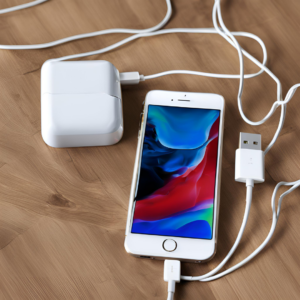How to Fix an iPhone That Won’t Charge: Proven Solutions to Bring Your Device Back to Life

Few things are as frustrating as plugging in your iPhone only to find it won’t charge. Whether it’s your primary device for work, communication, or entertainment, a non-charging iPhone can disrupt your entire day. Don’t panic! This guide dives into the common reasons behind charging issues and provides actionable solutions to get your iPhone back to 100% in no time.
Why Won’t My iPhone Charge? Common Causes
Before jumping to solutions, understanding why your iPhone won’t charge is crucial. Here are some typical culprits:
- Dirty or Damaged Charging Port
Dust, lint, or debris can accumulate in your iPhone’s charging port over time, preventing a secure connection. - Faulty Lightning Cable or Charger Cables and chargers wear out with frequent use or improper handling. A damaged or counterfeit cable could be the issue.
- Software Glitches A software bug or system freeze may interfere with the charging process.
- Battery Health Issues If your battery has degraded significantly, it may struggle to accept a charge.
- Faulty Charging Accessories Third-party accessories may not meet Apple’s standards and could cause charging problems.
- Overheating or Extreme Temperatures Your iPhone won’t charge if it’s too hot or too cold, as the device’s internal mechanisms protect the battery.
Step-by-Step Solutions to Fix an iPhone That Won’t Charge
1. Inspect and Clean the Charging Port
Your iPhone’s charging port is the gateway for electricity, and even a small blockage can disrupt charging.
- Use a flashlight to check the port for dirt or debris.
- Use a toothpick, a small brush, or a can of compressed air to gently remove any obstructions.
- Avoid using sharp objects that could damage the port.
2. Check Your Lightning Cable and Charger
Faulty accessories are a leading cause of charging issues.
- Inspect the cable for frayed wires, bent connectors, or discoloration.
- Test your iPhone with another certified Lightning cable and wall adapter.
- Avoid using counterfeit accessories; stick to Apple-certified products.
3. Restart Your iPhone
Sometimes, a simple restart can resolve software-related charging problems.
- For iPhones with Face ID: Press and hold the side button and either volume button until the power-off slider appears. Drag the slider, wait 30 seconds, and turn it back on.
- For iPhones with a Home button: Press and hold the top or side button until the power-off slider appears. Drag the slider and restart after 30 seconds.
4. Update iOS
Outdated software can cause glitches that prevent charging.
- Go to Settings > General > Software Update.
- If an update is available, download and install it. Ensure your iPhone has at least 50% battery or is connected to a charger during the update.
5. Test a Different Power Source
The issue might lie with the power outlet you’re using.
- Try charging your iPhone from a different wall outlet, USB port, or power bank.
- Avoid using low-quality power sources, like older laptops or car adapters.
6. Force Restart Your iPhone
A force restart can resolve deeper software freezes.
- For iPhone 8 and later: Quickly press and release the Volume Up button, then the Volume Down button. Press and hold the Side button until the Apple logo appears.
- For iPhone 7/7 Plus: Press and hold the Volume Down and Sleep/Wake buttons simultaneously until the Apple logo appears.
- For iPhone 6s and earlier: Press and hold the Home and Sleep/Wake buttons until the Apple logo appears.
7. Check Battery Health
A degraded battery may not hold a charge efficiently.
- Go to Settings > Battery > Battery Health & Charging.
- If the maximum capacity is significantly reduced (below 80%), consider replacing the battery.
8. Enable Optimized Battery Charging
This feature helps preserve battery health and can improve charging efficiency.
- Go to Settings > Battery > Battery Health & Charging.
- Toggle on Optimized Battery Charging.
9. Reset All Settings
If the issue persists, resetting settings can clear hidden configuration errors.
- Go to Settings > General > Transfer or Reset iPhone > Reset > Reset All Settings.
- This will not delete your data but will reset system preferences.
10. Contact Apple Support
If none of the above steps work, the problem could be hardware-related. Reach out to Apple Support or visit an authorized service provider for professional help.
Pro Tips to Prevent Future Charging Issues
- Use Apple-Certified Accessories Always use MFi (Made for iPhone) certified cables and chargers to avoid compatibility issues.
- Keep Your Charging Port Clean Regularly inspect and clean the charging port to prevent debris buildup.
- Avoid Overcharging Unplug your iPhone once it reaches 100% to extend battery lifespan.
- Update Software Regularly Stay on top of iOS updates to ensure optimal performance and compatibility.
- Store Your iPhone Properly Avoid exposing your device to extreme temperatures, which can damage the battery.
When to Replace Your iPhone’s Battery
If your iPhone struggles to charge despite troubleshooting, it might be time for a battery replacement. Signs include:
- Rapid battery drain.
- Unexpected shutdowns.
- Your iPhone feels warm during charging.
Replacing the battery can breathe new life into your device and restore reliable charging. Check if your iPhone is eligible for Apple’s battery replacement program.
Final Thoughts
A non-charging iPhone can feel like a disaster, but most issues have simple solutions. By following the steps outlined above, you’ll likely resolve the problem without professional help. Remember to maintain your device’s accessories, clean the charging port, and update software to avoid future hassles. If all else fails, Apple Support is just a call away.
Your iPhone is an investment, so treat it with care. A little troubleshooting goes a long way in keeping it functional and efficient.
